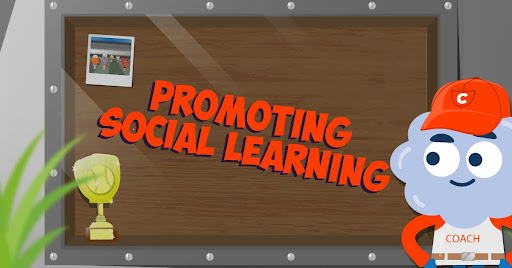Episode 20: Supercharging your
workplace learning culture
Duration: 34min
About our guest:
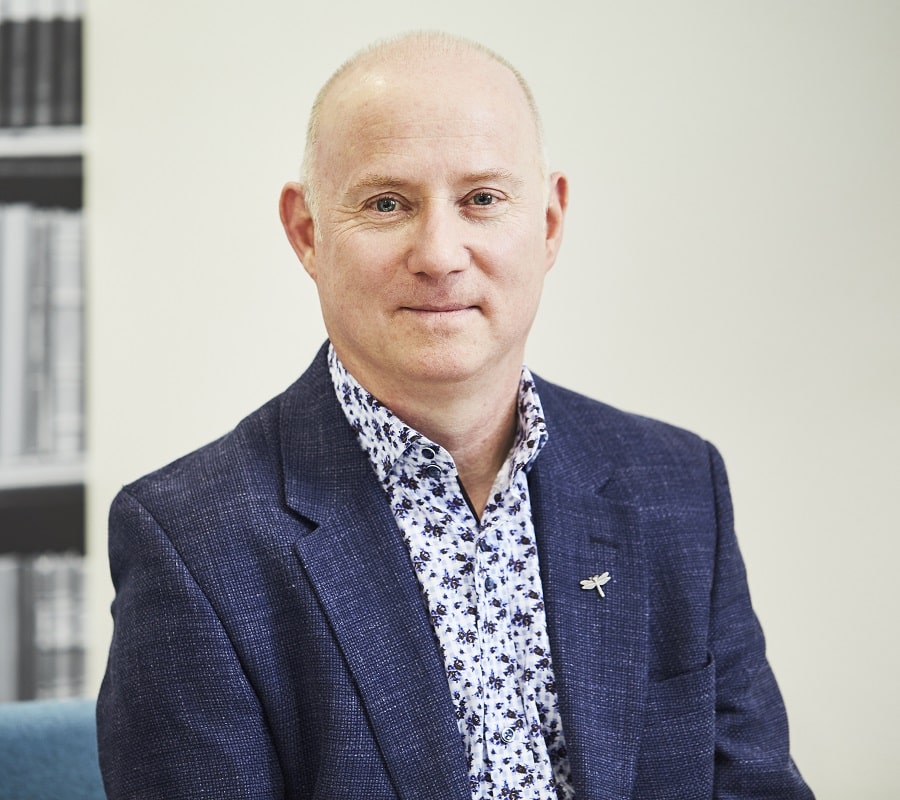
Andy Lancaster
Andy Lancaster, a pioneering leader in people development, is known for his innovative learning solutions. He is a trusted commentator, an inspiring speaker, and an award-winning author who transforms complex ideas into actionable insights.
Formerly the Head of Learning at CIPD and now Chief Learning Officer at Reimagine People Development, he specializes in coaching learning leaders and teams, developing impactful learning strategies and solutions, and empowering learning communities.
Share episode
A strong learning culture fuels knowledge sharing and personal development. But how? Andy Lancaster, CLO of Reimagine People Development and award-winning author, helps us uncover the path to creating a workplace where employees are inspired to own their growth journey.
Plus: from NASA to deep-sea whales, we look at the power of community learning and how it will transform today’s workplaces.
Key takeaways:
Social learning is on the rise. Learning together shapes the best workplace cultures, and most teams now say collaborative learning is a top priority. Socialized learning creates an engaging environment where knowledge is actively shared, applied, and transformed.
There are five main reasons why social learning is a game changer. It helps people share knowledge, discover best practices, tackle tough challenges, spark new ideas, and take control of their own growth.
Intentional learning communities make a difference. For social learning to thrive, communities need to have a purpose and be a safe space for everyone. The “7 Cs” framework (cause, culture, conditions, cadence, content, contribution, and credit) helps build sustainable and impactful communities.
The CURATE model gives L&D professionals a guide to finding, sharing, and organizing great content. With simple steps (Champion, Unearth, Refine, Aggregate, Transfer, and Embed), L&D experts can make learning easy, fast, and accessible.
Learning ecosystems are the future. Workplaces are moving beyond formal training to a more natural, connected way of learning. L&D pros are leaning towards creating flexible ecosystems where people learn through real connections, mentorship, and team collaboration.
More episodes we think you’ll love
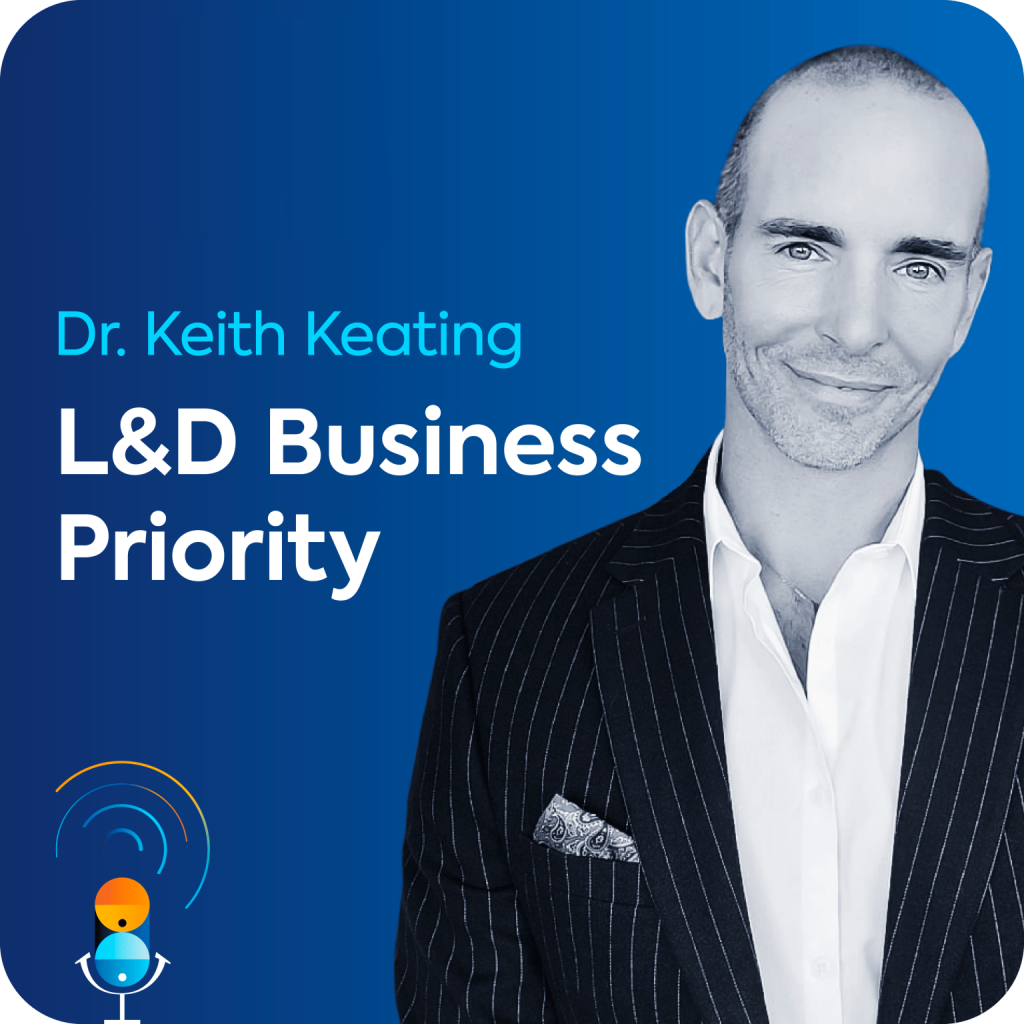
August 28, 2024 • 31 min.
•
People Management | Learning & Development
Championing L&D’s true value: Making learning a business priority
How can L&D overcome the 3 biggest challenges facing companies today? Why’s L&D failing to get approval from the C-suite? Dr. Keith Keating, the award-winning author of “The Trusted Learning Advisor” joins us to answer these questions. Plus, we cover how to create a culture where L&D’s value isn’t just a number, and the critical importance of positioning yourself one step ahead of tech trends.

October 9, 2024 • 38 min.
•
People Management | Learning & Development
Mastering a growth mindset and cultivating it in your workforce
How can we escape the fear of failure and celebrate experimentation rather than just the result? In this special episode, Nikhil Arora, shares his tips on how to commit to a growth mindset in both personal and professional life. He opens up about the importance of depersonalizing failure and why he thinks vulnerability is an essential leadership quality. We also learn what organizations can do to keep a culture of consistent learning alive. Plus we reveal TalentLMS’s latest research into the benefits of a growth mindset and their impact on training.
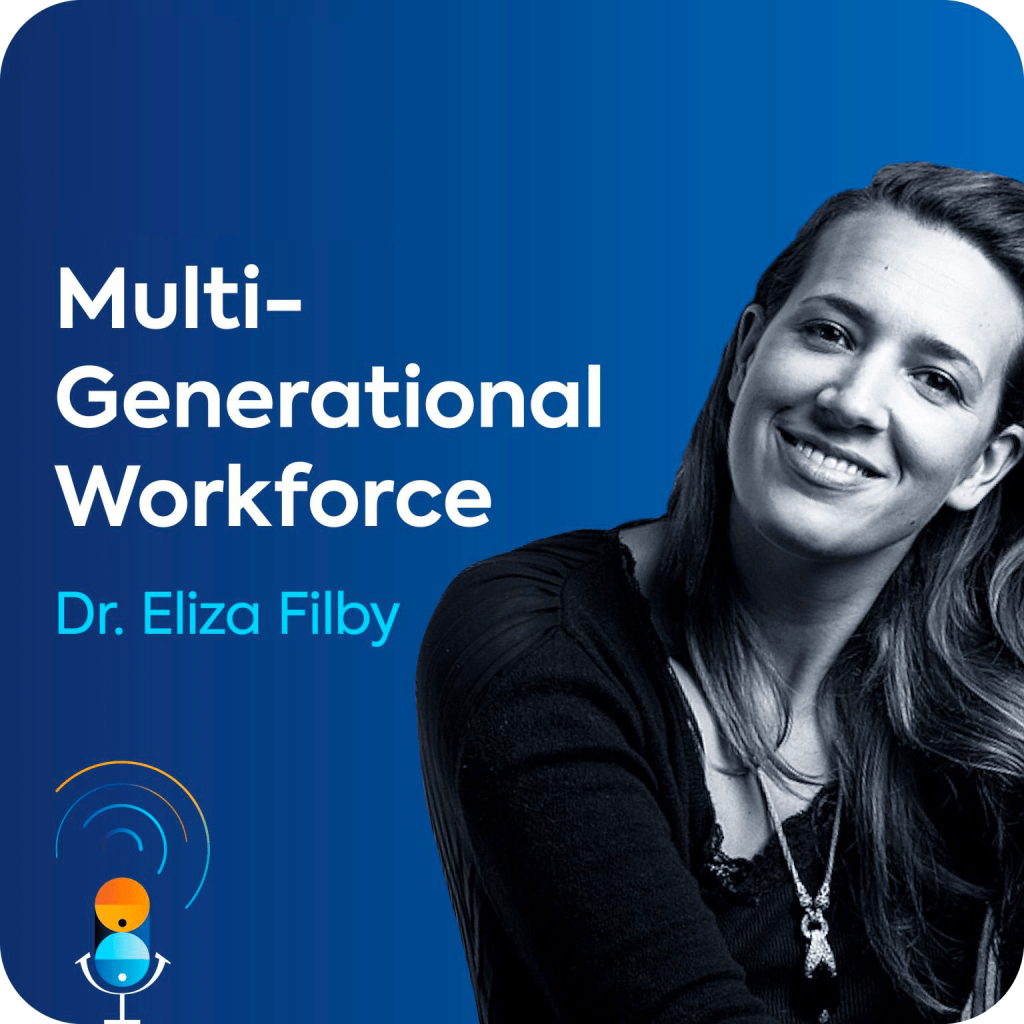
September 11, 2024 • 31 min.
•
People Management | Learning & Development
The benefits of a multigenerational workforce
Is the secret to embracing business change an all-age workforce? And what are the skills that Gen Z need to outpace AI? We get the answers with generational expert, historian, and business advisor, Dr. Eliza Filby. Plus, we talk declining attention spans and their effect on training, whether age-based stereotypes hold any truth, and why we need to rehumanize ourselves at work.
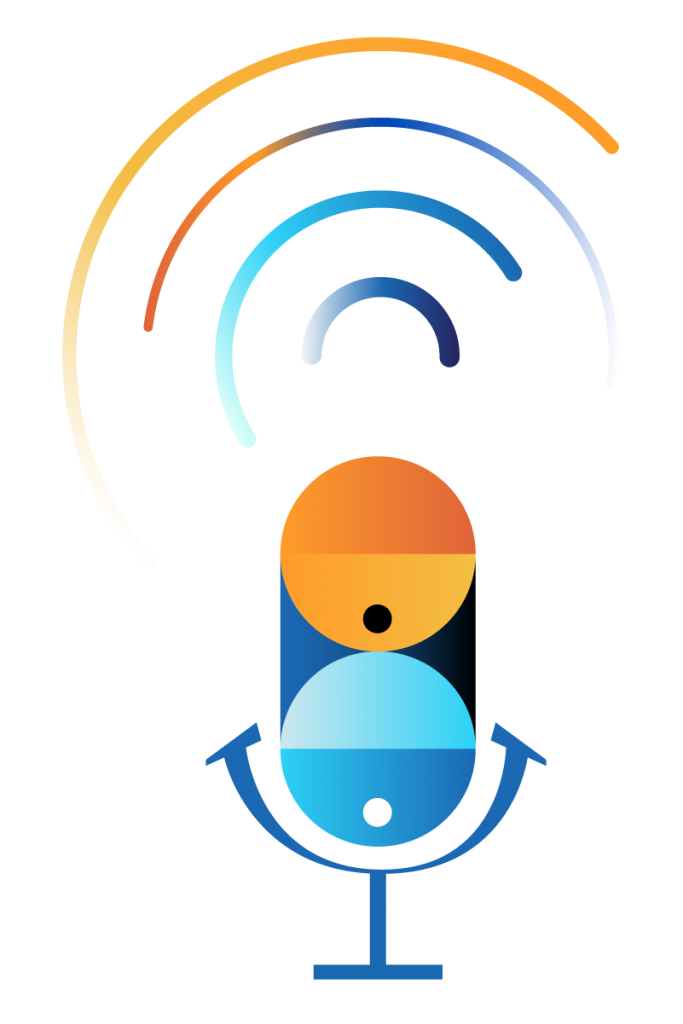
Never miss an episode! Get every new drop right in your inbox
Full Episode Transcript
[00:00:00] Host: Welcome to Keep It Simple, a podcast where we’re challenging business and leadership experts to cut through the noise of the corporate world and get to the bottom of what makes the workplace actually work. I’m your host, Mina Vogia. Keep It Simple is brought to you by [00:00:30] TalentLMS. The training platform built for success and designed with simplicity in mind. Together, let’s uncomplicate what makes a winning workplace. You can find out more at talentlms.com.
[00:00:46] On today’s episode,
[00:00:48] Andy Lancaster: If anything, our role is even more important because historically, my role was very much around designing stuff or finding content, but how much more exciting to be [00:01:00] actually supporting ecosystems of learning.
[00:01:02] Host: What can organizations take from the way the natural world shares its knowledge?
[00:01:07] And when time is scarce, how can we learn in the flow of work and actually apply what we’ve learned to solve problems? To discuss all this and more, we’re talking to the award-winning author and the man who was head of learning at CIPD for 10 years, Andy Lancaster. We’ll be quizzing him on everything from the power of socialized learning to the ways we can make [00:01:30] training more flexible and why self-directed development will be at the heart of the workplace of the future. Stay with us.
[00:01:49] So hi, Andy, how are you?
[00:01:52] Andy Lancaster: Yep. Doing really well, and great to connect with you. Thanks for the chance to chat and trust you’re doing okay as well.
[00:01:57] Host: Yes, yes, we are. Thank you. And thank you [00:02:00] for making the time and fitting us in your busy schedule. So, I’d love to just jump right in. Your new book, it’s all about the importance of socialized learning.
[00:02:09] So, why do you think it’s so important, especially in today’s work climate?
[00:02:15] Andy Lancaster: It’s a really good question. I think what drove me to write the book was the clear evidence that this is on the rise. So previously, obviously I run my own consultancy and now reimagine people development, but previously for 10 years I was head of learning at an organization called CIPD, a big [00:02:30] Institute, and I helped co-author the learning at work report last year and it was really clear that peer collaboration was was in the top six development methods, which were being used by organization and really interesting in terms of learning technologies, it was third only behind virtual classes and webinars and use of learning management systems. So there was no doubt from the research I was involved with that this is this was a growing trend. And if you look at things like LinkedIn learnings workplace learning reports, again, recent evidence would [00:03:00] show some great stats over 91 percent of teams now really rank learning together is really important, and it’s in the top drivers of great work culture.
[00:03:08] So I guess what prompted me to write the book was this is clearly now being leveraged and during our conversation, I’m sure we’ll see that this isn’t necessarily a new thing, but I guess I started with a blank sheet of paper to really explore why this is so important in organizations. And I came up with five key things, which perhaps I’ll just outline those, and we can unpack them if you want to.
[00:03:28] So the first one is [00:03:30] really valuable for sharing knowledge in organizations. Ken Blanchard, the great business guru, said, «no one of us is as smart as all of us.» And there’s this sense now that organizations are using socialized environments to gather, acquire, share, access and use information. So it’s a really important way of managing knowledge within the organization.
[00:03:50] Also, spearheading practice is the second one I found. Now, historically, certainly in the UK, going back way hundreds of years, most [00:04:00] professions had what was called a guild, which is where people gather together to share great practice and develop practice. And what I found in the research is that this concept of guilds and practice development is really emerging strongly at the moment.
[00:04:13] For instance, Bloomberg are now using, they actually use the word Guilds for their technical teams. Another quick and third one solving problems. Great way to solve problems in organizations, and we’ve probably all come across this term of wicked problems, which are fast and complex moving. And the evidence shows [00:04:30] that the way to solve problems effectively is through great socialized methods, such as lateral thinking and hackathons.
[00:04:37] Innovation was the fourth one. Succeeding innovation. Again, there’s some great research by McKinsey, which shows that many organizations, the chief execs rate a lack of innovation, their top three concerns. And if we look back, for instance, we all recognize Apple is an amazing organization now, but we forget that Apple began in a garage in Menlo Park, which can be traced as perhaps one of the driving factors.
[00:04:59] [00:05:00] Uh, behind the whole of Silicon Valley. So again, small groups innovate well. And lastly, I put this one last supercharging development. It is just a brilliant way for people to learn. And historically, that’s how ancient humans learned together in groups, whether it’s hunting or making fire, children naturally learn this way.
[00:05:18] And it’s a really important way that we can support genuine self-directed learning.
[00:05:23] Host: And do you think there’s been a kickback since the pandemic has accelerated remote working sort of [00:05:30] giving a sense of needing to get back to the basics?
[00:05:34] Andy Lancaster: Yeah, I think it has. It’s a really interesting one because if we, if we think about it, in fact, it was interesting on the research, it was pre-pandemic that this was on the rise.
[00:05:43] So I don’t think the pandemic actually was necessarily a clincher on this one. But I think it caused many of us to have fragmented relationships. So I think there is a rise now because we are trying to gather many organizations are trying to gather people having had remote working or [00:06:00] hybrid working.
[00:06:00] So I think it is, and I think a really important one for me, is I’m a real fan of artificial intelligence. There’s no issue for me, but individually spending time with large language models, it misses out on something ,that human interaction. And in many ways, I was thinking about this the other day, it’s quite ironic that we’re all working with large language models, which is harvesting all our information in one sense, it’s bringing us all together anyway, but I just think it’s so cool that we can actually have physical [00:06:30] connections with people, which are so important for relationships and effective working.
[00:06:34] Host: It’s interesting because if you look outside, everybody is on their phones constantly. That loss of connection has carried over after the pandemic on all aspects of our lives.
[00:06:48] So the fact that we can sort of bring it into the organization, into a company, into your workplace where you spend most of your time, that’s a really [00:07:00] powerful thing to do. So I’m glad that you’re advocating for this.
[00:07:03] Andy Lancaster: Yeah, and in one of the chapters, I started exploring the animal kingdom, which is just crazy because everywhere you look in the animal kingdom, you will find that socialized groups is how animals function.
[00:07:17] So we’re obviously very familiar with beehives and sharing information about where pollen sources are, but you find it amongst birds, hermit crabs who work together to swap shells. And I think the fascinating one for me was killer whales. [00:07:30] I mean, they work together as a socialized group to train the young how to hunt.
[00:07:35] So for me, again, it just felt in writing the book that we’re recapturing almost the obvious. We’ve lost something about connection and again, perhaps looking at the animal kingdom is just a brilliant way of reminding ourselves that whilst digital learning, which I’m passionate about, is really important.
[00:07:54] There are great ways to learn just hanging around with other people.
[00:07:58] Host: Definitely. [00:08:00] For our listeners who may not have come across the concept of socialized learning within organizations, can you provide some examples of types of communities?
[00:08:10] Andy Lancaster: Yep. So it was really interesting when I, again, I, I started with a very blank sheet of paper because I had my own preconceived ideas around what this could look like.
[00:08:19] And when I talked to most learning professionals, everybody jumped to the concept of communities of practice. Which, and we’ve got to recognize Etienne Wenger has done some [00:08:30] brilliant work. I’m glad to reference that in my own book. But I just thought, what is a community? Now, as far as I can see, a community is three or more people.
[00:08:39] So I went around organizations with a magnifying glass, looking at where learning was happening in groups of three or more. And there are lots of examples of this. So, okay, communities of practice where we gather together around a theme. Communities of interest are similar, but perhaps a little bit more informal.
[00:08:56] But I found Action Learning Sets, which are [00:09:00] small groups, five or six people who work together to support each other. Peer coaching circles are another one. The number of book clubs that are being run in organizations. And I just sat down and thought, this is socialized learning. I mean, this is people buying a book, buying some cakes and some coffee and sitting down and discussing it. So that was another one. And then another brilliant one, I’ll just reference if folks haven’t come across this John Stepper’s work around working out loud is just genius. So again, that really [00:09:30] involves me just, I guess, like, working and allowing people to see what I’m doing.
[00:09:34] And sometimes we don’t realize how profound what we’re doing is. It just seems simple to us, but it’s really powerful for others. So yet in the book, there are 10 types of socialized learning communities. And I think for me, the brilliant opportunity for us as learning professionals is to move towards intentional communities.
[00:09:54] They’re, they’re cropping up often, but this is how we encourage intentional communities across all those different [00:10:00] types.
[00:10:01] Host: I’m glad you brought up intentional communities because the next question refers to that, in a way, if you’ve seen a difference when these communities are started organically versus when it comes from a strategic point of view, where managers enforce these kind of communities.
[00:10:19] Andy Lancaster: That is such a brilliant and important question. So thank you for asking that one. When I get, I consult and go into organizations, the first thing normally I do is say, let’s go and find the [00:10:30] communities that exist because they absolutely will exist already. And often these are proactive people who are doing things like information sharing, practice development, those kinds of things, solving problems.
[00:10:40] So as learning professionals, the starting point is to think about where they are, and I liken it to going to someone’s party, you don’t arrive and take it over, you actually just respect it and get alongside. So the first thing I think before we just think about organizational versus spontaneous is to recognize they do [00:11:00] exist, and that’s a brilliant opportunity for learning professionals to go and find them and to support those people so that there definitely are different approaches to this.
[00:11:08] So if we just think about staff-generated communities, if we want to call that, say, bottom-up, grassroots up, they often are very much aligned to particular needs that people have very organic, very flexible, very informal, a really nice way of gathering for community. And often they have really high engagement because there is this strong buy in because we pioneered something together.
[00:11:29] [00:11:30] And I think that less formal insight can make them really fluid. So I think they’re brilliant. What we have to recognize within organizations that the quality can be variable. Now, top down organizationally owned communities sometimes are important, but I think you used a really interesting word there about kind of enforced.
[00:11:49] So there’s nothing worse than us being told we have to be in a community. So I think the organizational communities are far more aligned to things like clear business goals, clear [00:12:00] objectives, clear organizational outcomes, and often where they work really well, Is where we have to have some standardization or particularly some scale, and it needs resourcing.
[00:12:10] So there’s a whole chapter in organizational learning communities which I devoted to exactly this challenge about ownership and for me, five things. Autonomy, is it personal focus, organizational accessibility. Is it a little group or does it need to be big, quality, does it really matter if we may be talking about cyber security there may [00:12:30] be needs to be not a free for all in that one. Risk is another one. Is it a high risk, low risk, and scalability high or low? So I think the more we can empower, encourage people to own their communities, the better, but occasionally, yeah, I think we do need to design communities to support key organizational activities.
[00:12:49] And I’ll just throw in at this point, something I’ve learned about this, it’s best we don’t hang around people who are just like us. That’s a really dangerous thing to do. I [00:13:00] unpack the whole thing about bias and groupthink. Some of the best communities for me are with people I disagree with or I’m very different from because they provide those perspectives.
[00:13:09] So I think, again, I’d encourage people to say, once you know where you’re going with this one, being part of a diverse group around a given theme is really powerful.
[00:13:20] Host: We’ll get back to our chat with Andy in just a moment. But first, here are some insights into how an LMS can help bring your learning culture to life. [00:13:30] Knowledge sharing across the company is essential. Along with team-based projects and mentorship programs, you can create a space where learners can connect and teach one another whenever it suits them.
[00:13:41] Features like discussion boards give employees from across the organization a centralized spot to create a hive mind of quality resources that can help them challenge one another and ultimately collaborate. In the spirit of flexibility, make sure the content you offer is available on demand, [00:14:00] accessible to all, and that courses can be carried out at the learner’s pace.
[00:14:05] It’s common knowledge that it’s much easier to learn skills when people pick their own path and take the reins of their own learning journey. So give employees a way to set their own development goals and access to learning resources that don’t just fit the desires of the company, but actually align with their career aspirations.
[00:14:24] And of course, dive into data. Using the analytics and custom reports that an [00:14:30] LMS like TalentLMS provides is a fast and frictionless way to check impact on business outcomes and individual performance.
[00:14:41] I feel like your book to a very large extent can be applicable outside of the workplace as well, because It’s important that we’re constantly surrounded by people with different opinions, different point of views. They teach us more. They teach us faster, and they teach us better.
[00:14:58] Andy Lancaster: Yeah. Yeah. And I [00:15:00] think it’s, again, if we think about communities outside of the workplace, I mean, obviously there’s an incredible global one, mom’s net should be parents net, but it’s mom’s net.
[00:15:10] What more powerful thing? Can you think about my child will not sleep, my child will not eat vegetables, you know, all that kind of stuff, you know, if you have the privilege of being a parent, you know, how challenging it is, but what we see is that those are natural places where people engage to say, what do you reckon?
[00:15:25] How can you provide me with some advice? So it’s very important that we [00:15:30] recognize that communities are so vital for us. And we all dwell in many communities, whether it be sports or community or whatever. And I think as well, just to highlight as well for me, it was work-based, but in a kind, it wasn’t. I worked in rehab with heroin addicts and people with substance misuse issues for about five years.
[00:15:46] I was head of HR and learning for a very big organization in the UK. And what was really fascinating is community was how people changed. We use community as the means for transformation in lives and many people will be aware of things like 12 [00:16:00] step programs where people are actually in communities to, yeah, gain support for change in life.
[00:16:04] So I think for me it was a really powerful time. I remember being in a high-security prison, this is in the UK, in a group setting watching a bunch of guys working together on the issues they had, and again, when I wrote the book it just clicked again, to think often we want transformation in organizations, but we forget actually just letting people loose in an accountable group is a powerful way of bringing transformation.
[00:16:29] Host: [00:16:30] And giving them that kind of autonomy and trust that you can see this through, you can take this and make it your own and see how it goes.
[00:16:40] Andy Lancaster: Yeah, and it brings up the whole thing of psychological safety, doesn’t it? Which is really, really important. But how powerful to feel free to share a mistake in a group of people and say, God, there’s some huge learning from this or what do you reckon?
[00:16:51] So no, absolutely. I think allowing people to be authentic and be themselves and sometimes I’ve run formal programs where [00:17:00] that’s tricky that they’re so content driven. They’re so structured that we fail to leave room. It’s really interesting, actually, I ran a management development program.
[00:17:08] This is going back a number of years. And do you know what we realized? We realized during the lunchtime, which we saw as almost an inconvenient interruption in what we were doing, the lunch hours where they were solving problems and there were relationships building. And we increased the lunch hour from 60 minutes to 90 minutes.
[00:17:26] And the program just was so much the better for it. So I [00:17:30] think we, yeah, we should be designing in these socialized opportunities because they are so powerful.
[00:17:36] Host: That’s brilliant. The fact that you paid attention to that little bit of time and then you used it to your advantage. So if you’re a startup and you’re scaling up quickly, you’re bringing in new staff members, new skill sets.
[00:17:49] There tends to be plenty of innovation and cross-collaboration. How can already well-established companies recreate this kind of creative and collaborative atmosphere within their [00:18:00] company?
[00:18:01] Andy Lancaster: So I think leadership and management is so crucial in this one. If we look at any, if we’re looking at learning in the flow of work, which essentially communities often is, it’s grabbing time in the moment or is connecting with people when it’s relevant.
[00:18:14] It’s so crucial for managers to be aware of it and involved with that. So a couple of things. One, I think we need to work with managers to make them aware that this is a very valid thing. I’ll give you a quick example of that one in one organization who I won’t mention, but there was a challenge for someone using their mobile phone.
[00:18:30] [00:18:30] Because they thought they were shopping doing online shopping and they were actually in a WhatsApp group asking questions so there is this perception sometimes that if we ask to send someone on a formal program or to say we’re going to do some e-learning managers get that I’ll give you time to do that but if someone wants a little bit of time to do some socialized stuff it can often be viewed as wasting time so I think we need to work with managers.The other thing, which is really powerful,
[00:18:55] and I’ve got a whole section in the book on this one is I think leadership senior leadership [00:19:00] sponsorship of this as an approach is really important and communities often that do really well, do have a community sponsor someone with some influence who actually backs the community helps to steer it, maybe unblocks things when there are problems or provides resourcing. So I, I do think we’ve got to rewire the organization and I’ve never been able to do that without getting managers and leaders involved with that one. And you know how a really good way is to challenge managers and leaders to be in a socialized group themselves.
[00:19:29] Often you find [00:19:30] senior leaders are in small accountability groups. Often CEOs do that, but maybe it’s just flagging with them. This is a very, very important way that your staff can learn.
[00:19:40] Host: And the thing with sponsorship is you sort of bring closer the employees with C-level executives or project managers or people from different groups that they don’t usually get to work with on a day-to-day basis.
[00:19:54] And you know, you can sort of create sort of organic mentorship. [00:20:00]
[00:20:00] Andy Lancaster: Yeah, I think leaders do need to be supported in rethinking what modern workplace learning looks like. Many have had quite formal experience. I mean, obviously, senior leaders come from very different backgrounds, but many have had formal approaches to learning.
[00:20:15] So I think that’s really important. The other one I’ve come across in my first book, Driving Performance Through Learning, I found the work of Gerald Grow, who created a self-directed learning model, which I found really interesting. So this goes back to the early 1990s. But there was a real sense that we [00:20:30] need to help learners to be less dependent on the organization.
[00:20:35] And often, my experience is, you know, here’s a classic, what learning have you done? I haven’t done any learning this year. What do you mean? Oh, well, I haven’t been on any courses. So we almost have this stereotype as staff that learning it is going to be formal and Grow came up with this great thing that we need to move from dependent learners who we may have created that dependency.
[00:20:54] Now he says we need to move them to interested learners who are more taking on responsibility for [00:21:00] exploring things. Then we move to become involved learners. Where we actively take part in designing our learning, engaging with it, and then eventually we become self directed learners. So often I think in the sense of socialized communities, we do need people to be able to operate as self-directed, and sometimes that’s changing their thinking and also empowering them not to be dependent on us.
[00:21:21] Host: I definitely want us to go back a little later on the different types of learners, but during this interview, we’ve [00:21:30] already mentioned or alluded to a few of the seven Cs that you outline in your book. We’ve just spoken about culture and conditions, and you argue that these Cs are at the heart of any socialized learning community.
[00:21:43] But what I’m really interested in is cause contribution and credit. Could you just unpack these three Cs for us?
[00:21:51] Andy Lancaster: Yeah, that’s cool. So it might, shall I just quickly run down very quickly the seven and so people listening in can get those. So yeah, I found these. When [00:22:00] you find a really successful community, you often find these so cause there is a definite purpose around it.
[00:22:04] Culture is things like psychological safety, all those kind of things, how it works. Conditions are about how you design great face-to-face or digital environments, cadence is, most communities that work well have a rhythm. Content, we seed communities with great stuff. Contributions are about getting people from becoming lurkers to getting involved, and credit is about how do we recognize and value people so cause now if you look at Etienne [00:22:30] Wenger-Trayner’s brilliant work around communities of practice Etienne talks about domain as the reason for gathering particularly community of practice.
[00:22:40] Now, I think that’s an excellent thing, but I think for me, it needs to be quite edgy. Cause is like the magnet which pulls you in. And communities designed just for community’s sake, in my experience, often run out of steam quite quickly. Contribution. So how many people have been in communities where you think there’s, there’s hundreds of people here, but there’s only like three [00:23:00] people who actually interact, and there’s a great case study I found from NASA, which is right at the beginning of the book.
[00:23:06] So I’m not blaming NASA, but it made me feel good. They created a community called Spacebook in the early two, two thousands with the idea of engaging their tens of thousands of staff and contractors and universities, all that kind of thing. And then I think about three years later, they shut it down because they were only getting like 14 interactions a week.
[00:23:24] It’s just like, my goodness. So on contributions, there’s a real skill about how do we move people to [00:23:30] be active And not passive. Now, clearly some people might be nervous about making contributions, but there are some ways we can get around this. I’d like to go back to John Stepper’s work, encouraging people to work out loud is probably the best way of getting people to contribute because everybody can talk about what they’re doing. And often it’s really enlightening to see what other people are doing. The other thing I think we can do as well is to create activities which people can can get around. So it might be we flag ahead of time, we’re gonna have a discussion. This is [00:24:00] where cadence and rhythm come in. Maybe on a Friday lunchtime, there’s gonna be a discussion. We’re gonna give you a heads up so that you’re not caught out, and you’re not embarrassed. We’re gonna give you some time to think. So I think there’s some real skills around how we manage that.
[00:24:12] And again, community management. Having someone who’s responsible for encouraging the community is really important. Now on credit, when I started thinking about communities where credit, I mean, there’s some great ones out there. TripAdvisor is a brilliant one. TripAdvisor has a brilliant badging scheme that if you take part in the community and [00:24:30] you give a review or you’re the first to rate something, there’s a lovely badging system in there.
[00:24:35] There is no doubt that giving people credit and recognition for being great community members really matters, and I think within organizations that might be, yeah, digital badges are a great way of doing this, and I think those can be really relevant. The other part of credit which I found is there, most communities, certainly once they get going, there might be some specific roles which we can give people credit for.
[00:24:57] Perhaps for me, one of the most key ones is we have often [00:25:00] brilliant subject matter experts within organizations who would be brilliant to support communities and we can recognize their role for finding great content or answering great questions. And again, there might be people who are curating, there might be people who are contributing.
[00:25:15] So I guess great communities, you know, you’re valued. So we’ve got to maybe think about a credit recognition strategy for how we encourage people to be great community members.
[00:25:26] Host: I’d love to pick your brain on the [00:25:30] future and how you see it. So looking forward, do you think that we’re transitioning from an era of specialization to generalization?
[00:25:39] Andy Lancaster: Yeah, it’s a great question. And the skills agenda is really important at the minute. I’m just doing some personal reading around that. Yeah, world Economic Forum, McKinsey, there are a number of really significant reports which talk about our skills, and I think for me there is without doubt a generic skill set which we’ve now [00:26:00] got to build.
[00:26:00] I think throughout my career, often it has been role-focused skills, but I think you can now see those are generic skills, uh, whether they be interpersonal, I don’t use the word soft skills, I think it’s more interpersonal skills, I think it’s about effectiveness, personal effectiveness is really important, those kinds of things.
[00:26:16] So without a doubt I think you’re right and I think that’s a key for us as learning professionals. As to how we encourage people to develop those transferable skills. So yeah, without a doubt, and I’d encourage people to go and have a look at those. Yeah, the [00:26:30] World Economic Forum’s report, Future of Work report is a really fantastic read.
[00:26:34] So yeah, you’re absolutely right. I think generalization is one, I guess is one way of framing it, but I think it’s more probably, perhaps for me, it’s transferable skills are really important.
[00:26:44] Host: Another transition that you’re arguing for is for learning to become less formal and more spontaneous. So where does that leave the L&D professionals of today?
[00:26:55] How can we expect to see their roles change in the future?
[00:26:59] Andy Lancaster: Yeah, I think for [00:27:00] me, the first book, Driving Performance Through Learning, was really how do we create the environment where spontaneous learning is more possible. And obviously Josh Burson coined the, the learning in the flow of work phrase, which is great.
[00:27:13] So I think If anything, our role is even more important because historically my role was very much around designing stuff or finding content, but how much more exciting to be actually supporting ecosystems of learning. That’s just a really, as a designer, [00:27:30] that’s just such an exciting thing. So I think our role, we shouldn’t be in any way worried or in doubt about our role.
[00:27:36] So I think that the move is and some of those things which allow spontaneous community is one of those peer coaching is another great one where we equip people. So maybe our role is to become equip as of how do you mentor and coach in the workplace. I think content curation is another great one. You mentioned artificial intelligence is so crucial for us.
[00:27:55] But again, most staff don’t have time for this. So I, I’m [00:28:00] also advocating for us to become great digital curators where, you know, maybe someone can put a request in and within 24 hours we can turn around some, you know, some, some great things. So I think it’s a very exciting time for learning professionals to think how we can create agile solutions.
[00:28:15] Host: You mentioned a couple of things that I want to touch on before we move forward, the first one being digital curators. Can you give us some advice on how to become digital curators and especially [00:28:30] for L&D professionals who want to provide that curated content that’s both intriguing for their employees and supports the organization?
[00:28:40] Andy Lancaster: Yep. So first thing, I came up with a little model called curate. So curation is not just about finding loads of stuff and just dumping it onto a system. So I think what are you going to be champing is really, really important. U is for unearth, which is really important. How do you find this stuff?
[00:28:55] Now it’s much easier now with digital tools and with, and with, with AI to find great [00:29:00] stuff, and there’s great automated ways of doing that. Refine is the R, you’ve got to find the good stuff. So it’s not about giving people a hundred things. It’s about what you find, and you might need a subject expert to help you to find the real quality stuff.
[00:29:13] Then it’s about aggregation, which means about putting stuff together, that the sum of the parts is, it’s more than the individual one. So what we need to do is aggregate our content and make that really, really helpful to do that transfer is, is the T we then got to think about how do we get it to people?
[00:29:29] So [00:29:30] that’s about using digital platforms or smartphones or whatever. So it needs to be really accessible. And then the last one is how do we embed that learning? So I think I used to be a really haphazard curator. My goodness. I just used to kind of Google occasionally, whatever. So I think there is a little bit of a strategy needed in that little curate model that may help people to think about a process for doing that really well.
[00:29:49] Host: And it’s amazing. You really created a solution for yourself. You saw it was a shortcoming of sorts and you’ve really been able to break it [00:30:00] down for everyone. That’s great. Before we move on to our final question, one little thing for me. You mentioned before ecosystems. I really like the fact that you referred to organizations as such.
[00:30:14] I think that if we were to all make a shift on how we perceive an organization and instead see it as an ecosystem that thrives off of the interaction of one another, I think that’s really powerful. [00:30:30]
[00:30:30] Andy Lancaster: Yeah, I mean, if we think about ecosystems, they’re really interesting things, aren’t they? Because there is dependency within ecosystems and there is fragility as well.
[00:30:38] And I think for me in communities, they, they are sometimes fragile, you know, you maybe lose one particular person who maybe leaves an organization and suddenly the community is in a very different place. So I think an ecosystem is a great way. I mean, it might, the term may be overused, but I think it’s a really great one.
[00:30:55] If we study what ecosystems are, it’s about organisms living [00:31:00] effectively with each other. Very often, very different organisms and recognizing that kind of symbiotic thing where when we balance and when we complement each other. So I think the role of the learning professional is to think about, I mean, even if we just thought about the ecosystem in terms of key roles, if we thought about leadership, if we thought about the role of managers, if we think about different staff groups, if we think about the ecosystem, people have been a long time or people who are just joining, we begin to almost kind of see that [00:31:30] the dynamics that we need to manage, and I think for me, communities are just a brilliant way of doing that.
[00:31:34] I came up with this idea. It was based around the concept of a spiral curriculum. Most people will be, you know, probably be aware of spiral curriculums where you go, you cover the same topics, but you go in more depth. And I think for me, I just, just sitting there one day, just thinking about the spiral community, how do we manage people who may be on the 10th floor really experienced with people who are just coming in?
[00:31:57] But what a wonderful place to deal [00:32:00] with those things and to manage those things where seniors, more experienced people can help those who are more junior. And maybe those who are less experienced can ask the really difficult questions, which the group thinks is at the top who have been around us a long time.
[00:32:13] Host: Amazing. Now we have a little tradition on our podcast where we ask each guest, to – the toughest question, honestly, in my opinion, to in one sentence; how can we keep it simple when it [00:32:30] comes to creating socialized learning communities within our organization?
[00:32:36] Andy Lancaster: So I’m going to go back to my seven Cs model.
[00:32:39] I’m going to go back to the first one because that’s the crucial one. Make sure that the community gathers around a powerful cause.
[00:32:47] Host: Great. Andy, thank you so much it was so lovely chatting with you. And I hope people go out and get your book because I really do think that there’s [00:33:00] more value than just how to use it in a professional setting.
[00:33:04] Andy Lancaster: Thank you for that. It’s been a real pleasure to talk to you. It’s been a great conversation. You’ve asked some really insightful questions, which have got me thinking. So thank you for that as well.
[00:33:10] It’s been really fun being with you.
[00:33:12] Host: Thank you so much.
[00:33:18] Thanks for tuning in. In the next episode, we’ll be joined by TalentLMS customers, Kim Bellini and Randy Schumacher, who will share their journeys in developing an effective L&D program. [00:33:30] You can find Keep It Simple on all podcast platforms, be sure to subscribe so you don’t miss an episode. This episode of Keep It Simple was brought to you by TalentLMS, the training platform built for success and designed with simplicity in mind.
[00:33:47] For more resources on today’s topic, visit talentlms.com/podcast.

Train your people. Measure results. Drive growth.
TalentLMS gives you the tools to supercharge every step of your training.



